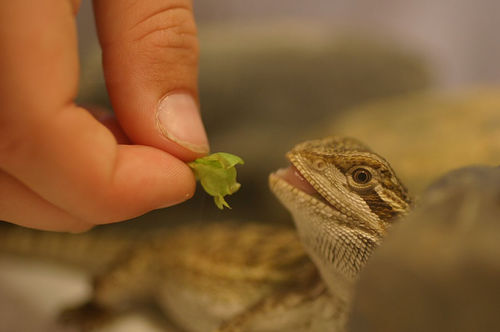The Bearded Dragon Guru: Your Ultimate Guide to Caring for your Scaly Pal
Welcome to the Bearded Dragon Guru
If you’re here, you’re likely either considering or already have a bearded dragon in your life. Congratulations! Known for their docile nature, unique appearance, and relatively low maintenance, bearded dragons make great pets. However, if you’re new to the world of reptile care, it can be overwhelming to learn all of the ins-and-outs of properly caring for your pet. That’s where the Bearded Dragon Guru comes in.
Bearded Dragon Basics
Before diving too deep, let’s start with the basics. Bearded dragons are a type of lizard that are native to Australia. They can grow up to 24 inches in length and live as long as 15 years. There are several different species of bearded dragons, but the most common kept as pets are the Pogona vitticeps. Male bearded dragons can be territorial, so it’s recommended to only keep one male per enclosure. Females, on the other hand, tend to cohabitate well with one another.

Enclosure Setup
One of the most important aspects of caring for your bearded dragon is setting up their enclosure properly. The enclosure should be at least 40 gallons and have a screen top to allow for proper airflow. Bearded dragons are desert creatures, so the enclosure should have a basking spot with a heat lamp that maintains a temperature between 95-110 degrees Fahrenheit. The rest of the tank should be kept around 75-85 degrees Fahrenheit during the day and 65-75 degrees Fahrenheit at night. Bearded dragons also require UVB lighting to metabolize calcium properly, so be sure to invest in a UVB bulb that provides 10-12 hours of light per day.
Feeding Your Bearded Dragon
Bearded dragons are omnivores, which means they eat both plants and animals. A healthy diet should consist of about 80% greens and 20% insects. Good greens to offer your bearded dragon include collard greens, kale, and mustard greens. Insects like crickets, mealworms, and Dubia roaches can also be offered in moderation. Be sure to gutload your insects with a nutritious diet before offering them to your lizard. Use calcium and vitamin supplements to dust the insects and greens before feeding to ensure your bearded dragon is getting all of the necessary nutrients.

Handling Your Bearded Dragon
Bearded dragons are generally docile creatures and can make great pets for those who enjoy handling their pets. However, it’s important to make sure your bearded dragon feels comfortable before handling them. Start by spending time near your bearded dragon’s enclosure while talking to them in a soothing voice. Once they seem comfortable with your presence, you can start offering them treats while your hand is in the enclosure. Eventually, you can start picking them up to hold and interact with them.

Common Health Issues
Like any pet, bearded dragons can experience a variety of health issues. Some of the most common issues include metabolic bone disease, impaction, respiratory infections, and parasites. As a responsible pet owner, it’s important to be aware of the signs of these issues and take your bearded dragon to a reptile veterinarian if you notice any concerning symptoms.

Conclusion
Caring for a bearded dragon can be a rewarding experience, but it’s important to make sure you’re providing the best care possible. The Bearded Dragon Guru hopes to provide you with all of the information you need to keep your scaly friend healthy and happy. Remember to give them plenty of love and attention, and your bearded dragon will be a lifelong companion.
